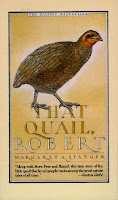 |
| Above: Experimentation & play |
As a young boy I experienced first hand what it means to move from being a talented and successful boy in the primary school years, to being a struggling student who was often in trouble as a teenager. At secondary school I slipped from A classes to B classes and then found myself struggling with a number of subjects. However, my achievements varied across subject. While in some classes I was rebellious and disengaged, in others I was motivated and successful. This is not an uncommon experience for boys. Some teachers, subject and even specific lessons work for boys, while others don't. Why? Is the answer in the curriculum? The content? The child? Or something else?
The research work by Dr Michael Reichert and Dr Richard Hawley set out to find answers to questions such as these, and concluded that the problem wasn't just within the boys. They interviewed teachers and students and observed effective lessons in eighteen participating schools from North America, UK, South Africa and Australasia. They found that the most effective lessons for boys included a number of common elements:
- They required students to be active learners (physical activities were a key)
- The teacher embedded desired learning outcomes in the form of a game or fun activities
- The lessons required individuals or groups of students to build, design, or create something that was judged competitively by classmates
- They required students to present the outcome of their work to other students
- They asked students to assume a role, declare and defend a position, or speak persuasively about something
- The lessons held student attention by surprising them with some kind of novelty element
- Lessons addressed something deep and personal in the boys’ lives; they engaged at a deeper personal level.
 |
| Getting a sense of scale! |
Reichart and Hawley concluded that the learning problem wasn't due to the limitations of the boys, but rather the failure of lessons to actively engage them. What they found when they observed effective lessons in the eighteen participating schools from North America, UK, South Africa and Australasia, was that relatively simple changes in classroom pedagogy made a difference for boys.
The common features in successful lessons for boys were active learning, movement, teamwork, competition, consequential performance, risk taking, and surprise. They concluded that successful lessons required teachers to engage and energize boys. They also found that boys were deeply relational and that the establishment of a positive relationship between teachers and boys is critical.
This last point is important. Over many years I have often asked students to name a great teacher and then to say why. The reasons given vary, and are typically idiosyncratic. But within each of the responses, invariably the student indicates that the teacher 'took an interest in them', 'understood them', 'saw some potential in them', 'got them interested in learning' and generally excited and engaged them. The general thrust of this work and its findings is that rather than simply blaming boys for their under performance, we need to seek different approaches in our classrooms to help to engage them as learners.
 |
| The excitement of chemistry |
In my own life I can think of three teachers who made a difference to my life - Mr Campbell (Grade 4), Mr Blaze (Grade 7) and Mr Hoddle (Grade 11). My memories of them are rich but the methods they used to engage me were very simple (and in one case unconventional). All had a deep commitment to their teaching and empathy for their students. They wanted me to learn and saw potential within me that other teachers weren't able to see. Mr Campbell when confronted with a new aquarium in his classroom turned to me one day and said, "I'd like you to find out all that you can about tropic fish". He gave me a book and sent me off to find out about them and how to care for them. Several weeks later he asked me to present a mini-lesson to the class on tropical fish. I was now the school expert on tropical fish!
My grade 6 maths teacher Mr Blaze (he was also my home room teacher, and cricket coach) overheard a student ridiculing me one day in class because I was overweight. He turned to the boy and said "I'll tell you what Meli, I bet TC will beat you in the cross-country race this week". He proceeded to set a wager, with the winner to receive $10 from his pocket. Now I had no intention prior to this of going in that race. But I did, and ended up $10 richer.
Mr Hoddle simply showed me that geography could be exciting by sharing his love of the subject and something of his life with a small group of senior students. He made it interesting by setting tasks that made us explore, solve problems and work collaboratively with others. And all the while he was interested in our lives and us.
 |
| The power of experience |
Boys and girls are different and as such at times require us to seek different approaches and forms of engagement. It is easy to dismiss boys who act out in classrooms as simply a pain in the neck for the teacher, but the acting out usually has some source and foundation. Just what is it, and how do we respond? The work of Michael Reichert and Richard Hawley offer us some clues and ways forward.
Jessica Lahey concludes her excellent article with these wise words:
"Educators should strive to teach all children, both girls and boys by acknowledging, rather than dismissing, their particular and distinctive educational needs."
My Previous Posts on Boys
I have written a number of posts on education for boys HERE







